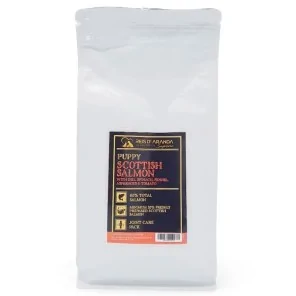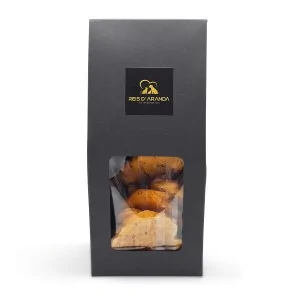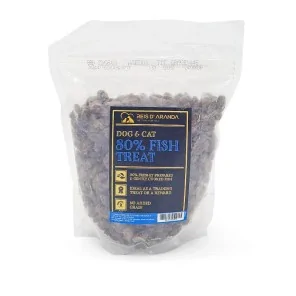Its name says it all: the Vienna blue rabbit comes from Austria. Not only is it beautiful with its shiny blue-grey...
THE SCHIPPERKE
INTRODUCTION
The Schipperke (‘little boatman’) is a descendant of the Leauvenaar, which also gave rise to the Belgian Shepherd. They are small, stocky, rumpy dogs with a dense coat and a skunky head, measuring 31 to 33 cm and weighing up to 8 kg. They have a cheerful and inquisitive expression, are generally hardy and energetic, skilful hunters and good watchdogs.
THE HISTORY OF THE SCHIPPERKE
The Schipperke (‘little boatman’) is a descendant of the Leauvenaar, which also gave rise to the Belgian Shepherd. They are small, stocky, rumpy dogs with a dense coat and a skunky head, measuring 31 to 33 cm and weighing up to 8 kg. They have a cheerful and inquisitive expression, being generally hardy and energetic, skilful hunters and good watchdogs.
Their origins are ancient. Documents from the end of the 17th century mention a dog that could very well be a schipperke, which lived mainly with the shoemakers in the Saint Géey district of Brussels. These shoemakers organised very unusual dog shows in which, more than the dog itself, they valued the collars worn, which were obviously the work of the craftsman who presented the dog. According to legend, one of these shoemakers, having been defeated in a collar competition, in a fit of rage, cut off the tail of the winning dog, thus leaving him with a tail on his tail. However, the result was not what the bad loser expected, as far from the mockery of those present, the dog in question was even more successful. From that moment on, all schipperke had their tails amputated.
WHAT IS THE SCHIPPERKE LIKE?
GENERAL APPEARANCE: Lupoid, the Schipperke is a small but solidly built shepherd. His head is cuneiform, with a well developed skull and a relatively short muzzle. His body is harmonious, short, rather broad and compact, but the limbs are fine boned. Its coat is very characteristic, abundant and straight, forming a ruff, mane, breastplate and breeches, which gives it its unique silhouette. Sexual dimorphism (sexual differentiation) is marked. Its morphology, as well as its characteristics and its sheepdog character, all in a small size, explain its great popularity, which extends far beyond the Belgian borders.
IMPORTANT PROPORTIONS:
- The height at the withers is equal to the length of the body, it is therefore a dog of square construction.
- The chest is well let down to the level of the elbows.
- The muzzle is visibly less than half the length of the head.
HEAD : Lupoid in shape, cuneiform, but not too elongated, and broad enough to be in harmony with the rest of the body. The superciliary and zygomatic arches are moderately arched. The transition from the cranial region to the facial region is visible, but cannot be too accentuated.
CRANIAL REGION: Forehead rather broad, tapering towards the eyes, seen in profile slightly rounded. The upper lines of the skull and the nasal bridge are parallel.
NASO-FRONTAL DEPRESSION: Marked, but not exaggerated.
FACIAL REGION:
NOSE: Small, nose always black.
NOSE: Becomes more pointed towards the region of the nose; well chiselled, not very elongated, the tip is not truncated; the length is approximately 40% of the total length of the head; rectilinear nasal bridge.
LIPS: Black, close fitting.
TEETH / TEETH: Teeth sound and well set in. ‘Scissor bite. Pincer bite is acceptable. Complete dentition, corresponding to the dental formula. The absence of one or two premolars 1 (1 PM1 or 2 PM1) or one premolar 2 (1 PM2) is acceptable and molars 3 (M3) are not to be considered.
CHEEKS: Dry, blending smoothly into the lateral parts of the muzzle.
EYES: Dark brown, small, almond-shaped, neither deep set nor prominent; the gaze is mischievous, intense and piercing; the eyelids are rimmed with black.
EARS: Very straight, very small, pointed, triangular (as equilateral as possible), set on high, but not too close together, firm, excessively mobile.
NECK: Strong, powerfully muscled; appears more voluminous because of the abundant hair on the ruff. Of medium length, well let down, of good carriage, more erect when the dog is attentive, with slightly arched upper margin.
BODY: Short and broad, therefore compact, but not excessively bulky or heavy, ideally square in shape. The length from point of shoulder to point of buttock is therefore approximately equal to height at withers.
UPPER LINE: The upper margin of the back and loin is straight and well tensed, often rising slightly from the croup to the withers.
CROSS: Very accentuated. Seems even higher because of the mane.
BACK: Short, straight and strong.
LOIN: Short, broad and compact.
Croup: Short, broad and horizontal; the back of the croup, and therefore the junction between the croup and the point of the buttock, is harmoniously rounded, which is known as the ‘guinea pig's rump’.
CHEST: Well let down to level of elbows; broad in front and behind shoulders, thus ribs well sprung; in profile, the front part of the chest (forechest) is well sprung.
BOTTOM LINE: The lower part of the chest is well let down, reaching to the elbows, rising slightly and harmoniously towards the belly, which is somewhat raised, neither pendulous nor tucked up (tucked up).
TAIL: Set on high. Certain dogs are born anurans (completely tailless) or with a rudimentary or incomplete tail (stump tail or short tail) and cannot be penalized for this. In repose, a natural tail (reaching at least to the hock) should preferably be carried low and may be raised in action, in extension of the topline, but preferably not exceeding the topline. Tail curled or carried over the back is acceptable.
LIMBS: Fine boned, carried well under the body.
FOREQUARTERS: FINEBONED, WELL UNDER THE BODY:
GENERAL APPEARANCE: Well plumb when viewed from all angles, perfectly parallel when viewed from the front, length from ground to elbows almost equal to half the height at withers.
Shoulders: Long and well laid back, the angulation of the shoulder is normal.
ARMS: Long and sufficiently oblique.
ELBOWS: Firm, neither too wide nor too close together.
FOREARMS: Straight, seen from the front, fairly wide apart.
CHEEKS: Firm and smooth.
MEACARS: Rather short. Seen from the front, in straight prolongation of the forearms, in profile, at most very slightly sloping.
HANDS: Small, round and close together (‘cat foot’); fingers arched; nails short, strong and always black.
HIND LIMBS:
GENERAL APPEARANCE: They should lie under the body, and be perfectly parallel, when viewed from behind.
Upper thighs: Long, very muscular. They appear wider because of the dense trousers.
KNEE: Approximately in line with the haunch; the angulation of the knee is normal.
LEGS: Approximately the same length as the thighs.
HIPS: Good angulation, without exaggeration.
METATARS: Rather short; the presence of dewclaws is not desirable.
FEET: As forelegs or slightly longer.
GAIT / MOVEMENT: At trot, the movements are elastic, firm, with medium amplitude, good drive of the hindquarters, the back is kept horizontal and the limbs move in parallel; the movement of the forelegs should be in harmony with that of the hindquarters and the elbows should not be separated. At a higher speed, the limbs converge.
SKIN: Tight over the whole body.
COAT
HAIR: The outer coat is abundant, dense, straight, sufficiently harsh, of fairly firm texture, therefore dry and resistant to the touch, and forms with the undercoat, which is soft and dense, an excellent protection. The coat is very short on the ears and short on the head, the front part of the forelegs, the hocks and the hindquarters. On the body, the coat is of medium length and close lying. Around the neck the coat is much longer and more spread out, starting at the outer edge of the ears, forming, especially in the male, but also in the bitch, a wide and very typical ‘ruff’ (long hairs around the neck, in a herringbone on each side), a ‘mane’ (long hairs on the upper region of the neck, extending to the withers and even the shoulders) and a ‘chest’ (long hairs on the lower region of the neck and the front part of the chest (forechest), extending between the forelegs and ending progressively under the chest). On the back of the thighs, long and abundant hairs, covering the anal region, the tips of which turn inwards in a very typical manner, form the ‘trousers’. The tail is adorned with hair of the same length as the body hair.
COLOUR: Fawn black. The undercoat must not be absolutely black, but may also be dark grey if it is completely covered by the outer coat. Some grey due to age, for example on the muzzle, is acceptable.
SIZE AND WEIGHT:
WEIGHT: 3 to 9 kg. An average weight of 4 to 7 kg is sought after.
FAULTS: Any departure from the foregoing points should be considered a fault and the seriousness with which the fault should be regarded should be in exact proportion to its degree and its effect upon the health and welfare of the dog.
- GENERAL APPEARANCE: Heavy, lacking in substance; paticorto or patilargo; elongated body, rectangular in shape (inscribable in a rectangle).
- HEAD : Too long or too short. Lines of skull and muzzle not parallel; fox-like appearance; superciliary or zygomatic arches too protruding.
- CRANIAL REGION: Too narrow, forehead too rounded or arched (‘apple-shaped’).
- HOCIO: Very elongated, pinched; thick, truncated; convex (blunt) nasal bridge.
- DENTURE: Incisors poorly aligned or poorly set.
- EYES: Large, round or prominent, light in colour (‘hazel’ is still accepted).
- CHEST: Narrow, flat, cylindrical; not sufficiently let down.
- Croup: Long, sloping, over-elevated; interrupted curvature of the rear edge (transition from croup to back of thighs).
- GAIT / MOVEMENT: Close, too short striding, too little drive, poor transmission through the back (when the back line is not kept correct in action), raised movement of the forelegs or jumping in the hindquarters.
- Coat too short (sparse), too long, too sparse, soft or silky, wavy, too close to the body or too hanging; too little or no ruff, mane, chest or trousers (more serious fault in the male, especially the absence of ruff). Shortage of hair on undercoat.
- COLOUR: Grey, brown or reddish highlights in the top coat. Occasional white hairs, even on toes.
- Apathetic or shy dog.
SERIOUS FAULTS:
- Absence of one incisor (1 I), of three premolars 1 (3 PM1), or of two premolars 2 (2 PM2).
DISQUALIFYING FAULTS:
- Aggressiveness or extreme shyness.
- Any dog showing clear signs of physical or behavioural abnormalities.
- Breed type fault.
- Overshot; undershot, even without loss of contact (reverse articulation); cross bite; crooked mouth; absence of a canine (1 C), of an upper (1 PM4) or lower (1 M1) butcher tooth or of a molar (1 M1 or 1 M2, except M3), of a premolar 4 (lower PM4), of a premolar 3 (1 PM3) and another tooth, or four teeth in total or more (except the four premolars 1).
- Depigmentation of the nose, lips and eyelids.
- Hanging or semi-erect ears.
- Long and soft or silky coat, therefore a coat evidently of the ‘longhair’ type; strips of long hair on the ears, on the back of the limbs, etc.; total absence of an undercoat.
- Top coat of any colour other than black (except grey, brownish or reddish highlights) or with very small white patches, even on the toes.
- Weight clearly outside the prescribed limits.
N.B.:
- Male dogs should have two apparently normal appearing testicles fully descended into the scrotum.
- Only functionally and clinically healthy dogs with breed typical conformation should be used for breeding.
HEALTH OF THE SCHIPPERKE
The most frequent diseases in this breed are:
- HIP DISPLASIA: This is a very common disease in German Shepherds. It is characterised by inflammation and pain in the joint between the hip and the femur of the dog. It is a congenital hereditary disease.
- ELBOW DYSPLASIA: Canine elbow dysplasia is a disease consisting of multiple abnormalities of the elbow joint. The elbow joint is a complex joint made up of three bones (the radius, ulna and humerus). If these three bones do not fit together perfectly as a result of growth disturbances, an abnormal distribution of weight on different areas of the joint occurs, which causes pain, lameness and leads to the development of arthritis. Elbow dysplasia is a disease comprising several disorders grouped into medial space disease (fragmentation of the coronoid process, osteochondrosis, elbow incongruity and elbow anomalies) and nonunion of the anconeal process. The cause of canine elbow dysplasia is unclear. There are several theories as to the exact cause of the disease, including genetics', cartilage growth defects, trauma, diet and other issues. The most common suspicion is that it is a multifactorial disease causing growth disturbances.
THE SCHIPPERKE'S PERSONALITY
He is a happy, active and always attentive dog, who loves water very much. It is a good companion animal, mole or mouse hunter and watchdog. His Flemish name, as mentioned above, means ‘little boatman’, as he used to accompany the boatmen on the Flanders Canal. On board the boats, his task was to clean the boat of rodents and to stand guard, barking furiously at any stranger approaching the boat.
He could be the best companion for horse riders, as horses and schipperke can develop an immediate rapport, not to mention keeping the stables clean of rodents. Despite its size, it is a great companion for excursions and walks in the park, as it has a lot of energy.
CONCLUSION
Although this small Belgian Shepherd Dog is barely over 30 cm, he has plenty of self-confidence. The Schipperke is a small, strong, athletic watchdog with a watchful eye who defends his family with loyalty and courage.
Leave a comment
Log in to post comments
















